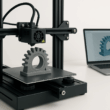Introduction
Have you ever wondered how some companies seem to operate with a level of efficiency that makes others look sluggish? The rapid advancements in technology, particularly artificial intelligence (AI), are changing the workplace landscape, making it crucial for managers, leaders, and tech enthusiasts to understand their implications. According to the provided research, AI technologies not only streamline operations but can also enhance productivity, bringing a wealth of benefits to businesses poised to embrace these innovations.
As organisations increasingly rely on AI-driven tools to refine their processes, the potential for enhanced workplace efficiency becomes a pressing topic for discussion. Understanding these technologies could offer invaluable insights into optimising operations and adapting to a constantly evolving digital environment.
The Transformation of Workplace Productivity
AI is often credited with revolutionising productivity across multiple business functions, and this transformation continues to accelerate. As noted in the provided articles, the use of generative AI promises significant contributions to productivity in various sectors, including customer operations and sales. The potential to automate routine tasks can drastically reduce the time spent on activities that normally consume significant human resources.
For instance, tools like ChatGPT and GitHub Copilot exemplify how AI can support knowledge-driven roles by automating aspects of software engineering and content creation. These contributions not only streamline workflows but also free employees to focus on more strategic, creative tasks that require human intellect and emotional insight. Thus, while the expectation may not always yield dramatic increases in productivity rates per year, the cumulative effect of these tools could lead to considerable enhancements in workplace efficiency over time.
Key Tools Shaping the Future
The landscape of AI workplace tools is diverse, encompassing applications designed to automate a myriad of tasks. For example, as highlighted in the articles, Zapier has become a vital tool with its ability to integrate over 7,000 applications, allowing users to automate workflows without requiring extensive coding skills. This no-code automation facilitates seamless task management and coordination across different platforms.
Moreover, meeting transcription tools like Otter can provide critical insights by documenting discussions in real time, whilst project management tools like Trello, enhanced by Atlassian Intelligence, help teams collaborate more effectively on their tasks. The presence of intelligent features that summarise calls—such as the Workplace Companion for Zoom—further exemplifies how AI can simplify communication and ensure vital information is not overlooked.
In addition to these tools, there are applications designed to gamify task management, such as BeeDone, which motivates teams to complete tasks through a fun and engaging process. This amalgamation of tools collectively demonstrates AI’s capacity to not only boost individual productivity but also foster a more collaborative and inventive workplace environment.
Challenges and Considerations
While AI-driven solutions present remarkable opportunities for workplace efficiency, it is essential to recognise the challenges that accompany such advancements. As noted in the provided research, issues including integration hurdles, privacy concerns, and the management of algorithmic biases must be navigated carefully.
The integration of new technologies often presents obstacles, with businesses needing to adapt their existing systems to accommodate AI solutions. Additionally, with the increased reliance on data comes the necessity for stringent privacy protocols; ensuring that sensitive information remains protected while harnessing the power of AI is a complex but essential task.
Moreover, as AI continues to evolve, companies must invest time and resources into workforce reskilling. The apprehension surrounding job displacement can lead to resistance against adopting such technologies, making it vital for leaders to communicate the benefits of AI and reskill their teams to thrive in this new landscape.
Final Thoughts
In summary, AI-driven technologies are not just tools; they represent a paradigm shift in how businesses can operate and improve efficiency in the workplace. The impactful applications discussed, from Zapier to advanced transcription tools, illustrate the breadth of possibilities available to organisations willing to adapt.
Based on the provided materials, it is clear that while challenges exist, the impetus for leveraging AI is strong, with potential productivity enhancements that cannot be ignored. As this technology continues to develop, organisations that strategically adopt AI will likely lead the charge in shaping the future of work.








